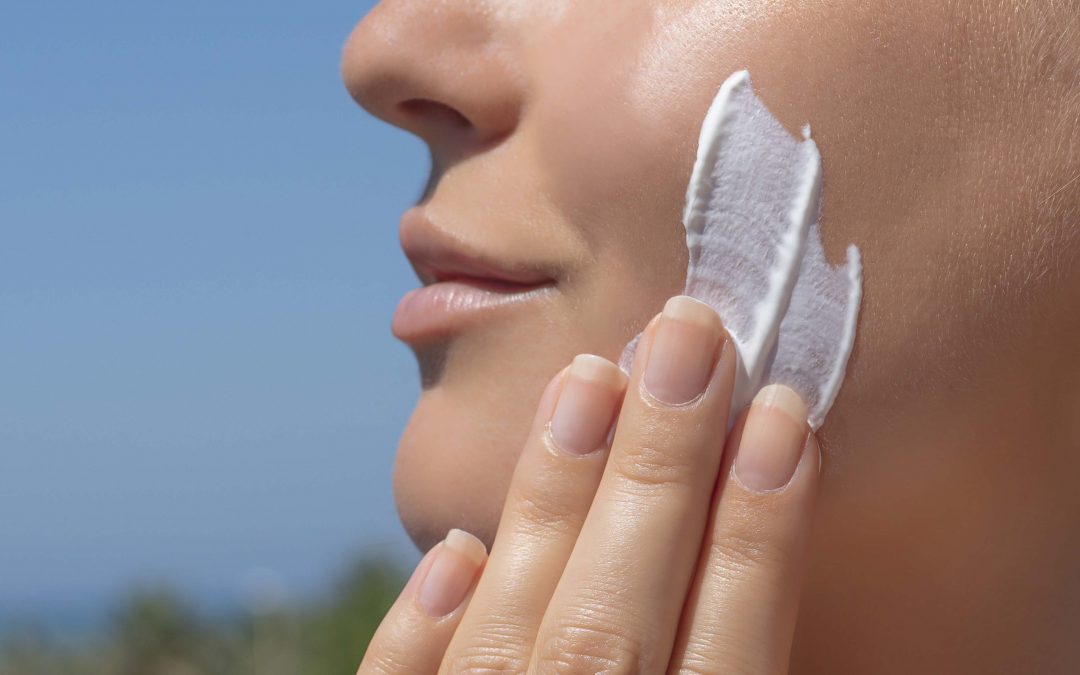Over the years, we all can see the changes in our skin as some fine lines make their appearance around the eyes when we laugh. We start to notice forehead wrinkles and lines between the eyes when we frown. The clock never runs back, but we can at least slow it down a little by taking the best care we can of our skin. Cleansing and moisturizing your skin every day and applying good antiaging cream will make a difference, but avoiding external stressors that speed up skin aging is as important or even more.
Many external factors exacerbate skin aging, such as cigarettes and alcohol consumption, poor sleep, or an unhealthy lifestyle. However, in terms of skin aging, sun exposure is your worst enemy. Why is that? Sun exposure triggers the so-call skin photoaging, which damages your skin cells. It significantly accelerates the skin aging process to a great extent. It is believed that 90% of the signs of skin aging are due to sun exposure. So never forget this: there is no better way to prevent skin aging than protecting your skin from UVR.
CHRONOLOGICAL AGING VS PHOTOAGING
Chronological aging and photoaging are overlapping processes with blurred boundaries that make it difficult to separate them. However, they show a few distinctive features. More importantly, they are triggered by different factors:
- Photoaging or extrinsic process is triggered by sunlight (UVR) and, in less proportion, blue light (HEVL). These generate reactive oxygen species (ROS), also known as free radicals, that damage the skin cells and cause oxidative stress. It leads to the rapid degradation of skin proteins that inevitably accelerates skin aging. Moreover, it promotes the formation of dark spots and causes pigmentation changes or uneven skin tone. Photoaging shares many signs with chronological aging, as it accelerates the loss of elasticity and firmness, nevertheless, deep wrinkles, age spots, leathery skin appearance, and telangiectasia (in some cases) are primarily attributed to photoaging.
HOW DOES UVR TRIGGER PHOTOAGING?
As we already told you in our post Sun & Skin, there are three main UVR wavelength ranges, UVC, UVB, and UVA. UVC rays do not reach the Earth’s surface, so they are not a risk for human health. UVB radiation has more energy than UVA and can cause sunburn and skin cancer. Finally, UVA rays, despite having less energy, are the ones that penetrate the deepest into human skin, so they are the main responsible for skin photoaging.
Among other skin reactions, chronic or excessive UV Radiation exposure induces the production of Reactive Oxygen Species and increases the expression of Matrix MetalloProteinases (MMP). These degrade some skin proteins that are crucial for the elasticity, moisture, and firmness – collagen, fibronectin, elastin, and proteoglycans. The degradation of these proteins and, more importantly, the presence of fragmented collagen particles cause a reduction in the synthesis of new collagen and impair the skin structure, leading to rough skin texture and the formation of wrinkles. Moreover, to protect itself from sun exposure, your skin produces more melanin than usually when exposed to UVR. This overstimulation of the melanocyte leads to the formation of solar lentigines and melasma.
CAN SUNBLOCK OR SUNSCREEN REALLY PREVENT SKIN PHOTOAGING?

There are two ways of protecting your skin from photodamage: you can avoid sun exposure as much as you can, or you can wear sunblock every time you go out. We recommend combining these two, plus also using skincare products that act as free radical scavenges such as INNO-EPIGEN® Urban Day Cream SPF20 and INNO-EPIGEN® Antiox Serum.
A good sun cream combines different types of filters. Some of these filters reflect most or all UVR off, preventing them from getting into the skin. Some other filters transform the radiation that enters the epidermis (outermost skin layer) into heat energy before it reaches the deeper layers of the skin, neutralizing the damaging effects of UVR and preventing the formation of free radicals.
In INNOAESTHETICS®, we know that preventing sun damage is crucial, and so most of our skincare products include SPF. As summer is usually the sunniest session, we recommend you to bring a sunblock always in your handbag. Remember to apply it 30 min before sun exposure and reapply every two hours or after swimming if you are on the beach!
Combines various types of filters to protect your skin from UVB and UVA rays. It is your perfect companion not only to go to the beach but also to have at hand every day.

Specific broad-spectrum sunblock for oily skins. It also protects you from UVB and UVA rays, so it is perfect for both the beach and for going for a walk in the city.

Not only offers broad-spectrum protection from UVR and HEVL, but it is also a prime foundation with all-day coverage and a dewy finish.



